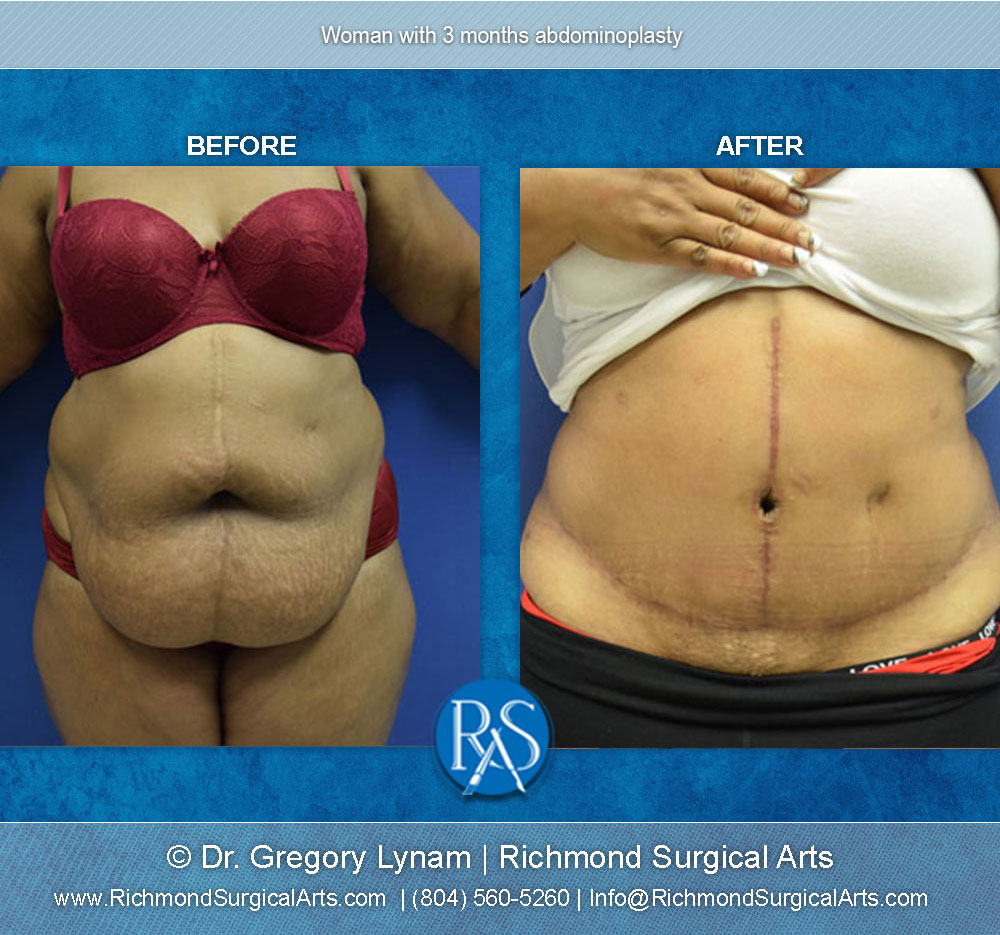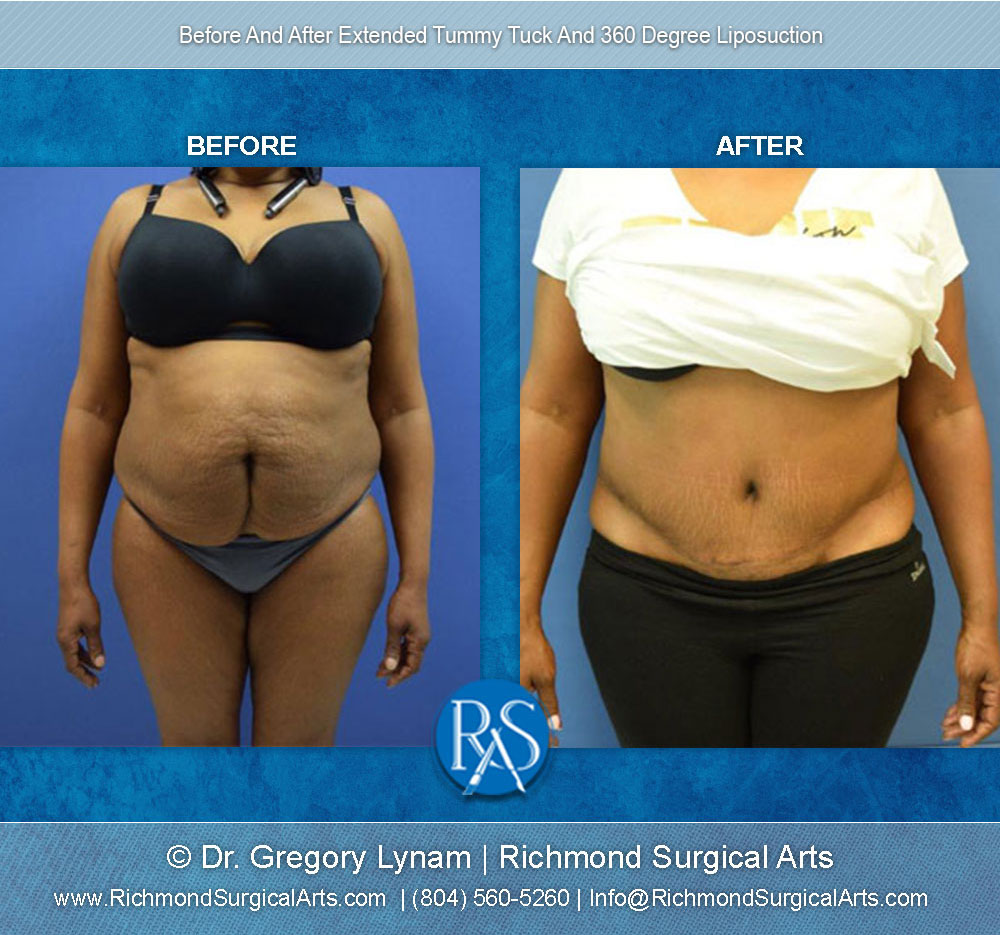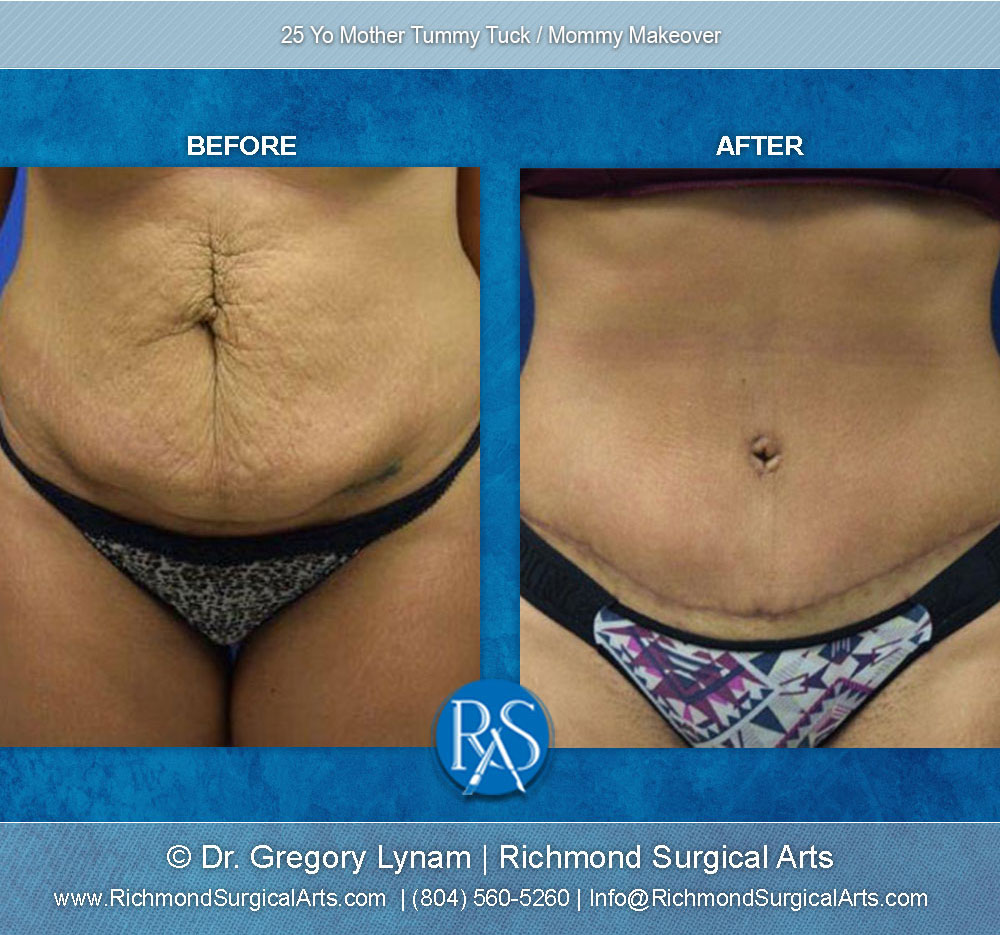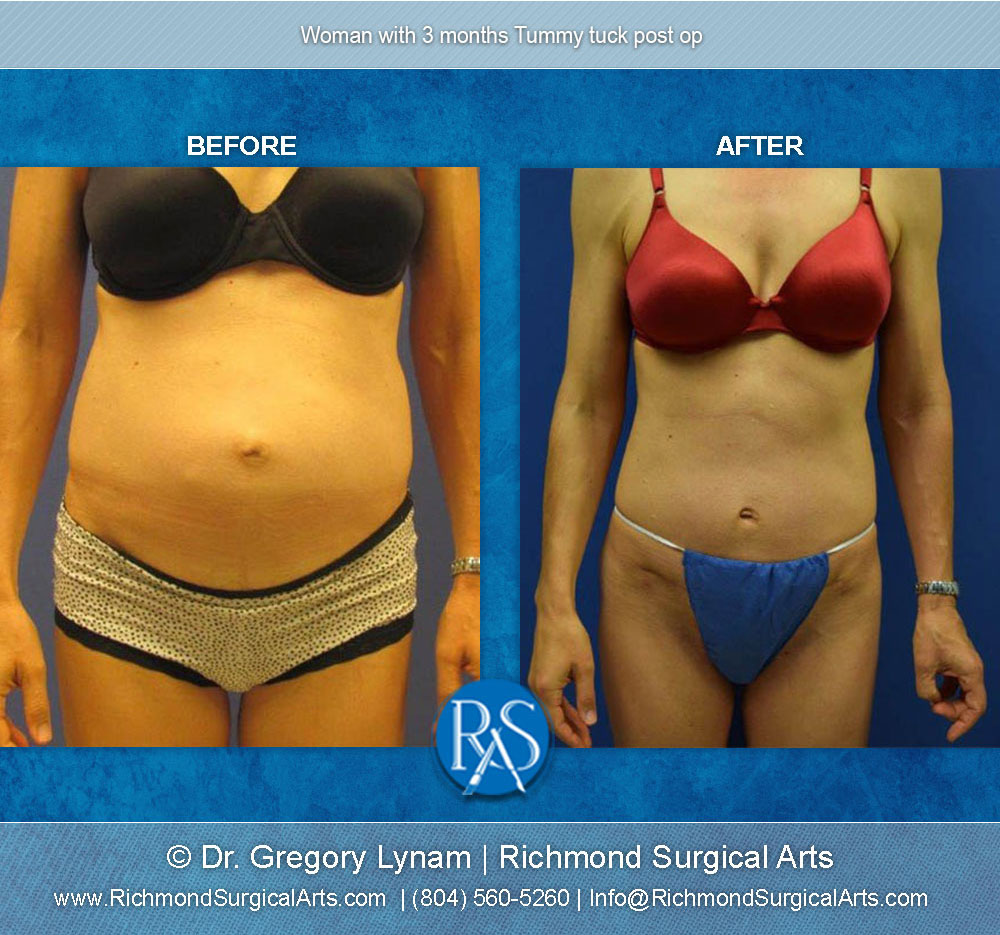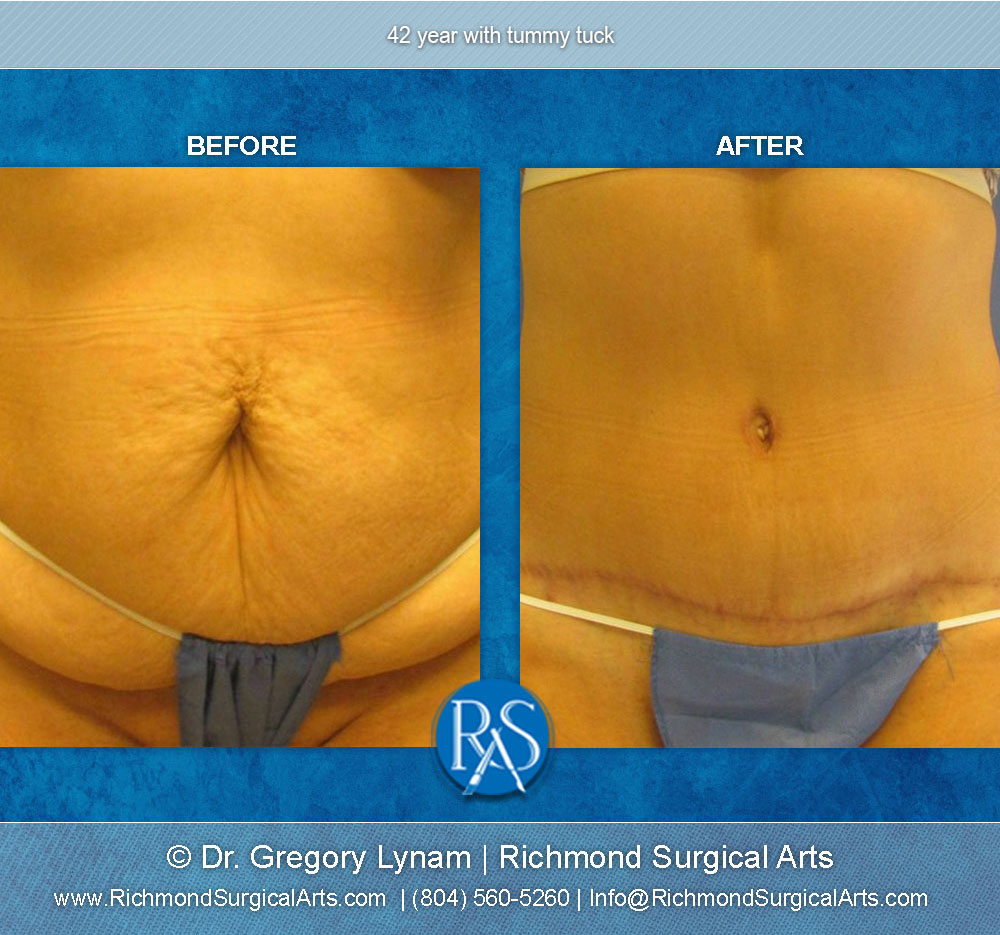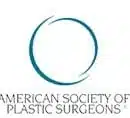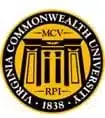
Tummy Tuck In Richmond,Va

Tummy Tuck Case Studies
Table Of Contents
Overview
Abdominoplasty [Tummy Tuck]
This includes the removal of excess skin, fat, and the tightening of the deeper muscle layer that has been stretched from weight gain and/or childbirth. There are a number of options in the tummy tuck procedure, depending on the patient’s needs and desires.
Based upon your examination, Dr. Lynam will recommend the best option for you to achieve the desired end result. No amount of diet and exercise will shrink skin or tighten stomach muscles if they have been stretched after pregnancy.
While there are a few women who have no stretch marks after pregnancy and whose muscles have stayed together, most women – even if they get back to pre-pregnancy weight – will still notice a bulge and extra skin in the lower tummy region.
– Richmond Plastic Surgeon Dr. Lynam
View Transcript
So the three things a tummy tuck does is tighten or repair the loose muscles, number one. Number two is remove the excess skin, and number three, remove the excess fat. That in a nutshell, is what a tummy tuck does.
Consultation
– Preparing To Meet With Dr. Lynam – What To Expect
View Transcript
We want to evaluate the amount of skin you have, extra, above your belly button and then below your belly button, and we need to look at the ratio of those areas, to determine how much skin you have, so we can plan on giving you a very low scar. It’s one of those operations that seems conceptually very easy, but technically, it’s somewhat challenging. You have to balance a lot of things. You’re tightening muscles, you’re tightening skin, and the key really, is doing this very safely, and creating a very natural appearance of the belly button and of the lower incision, we want it down by the hairline or the pubic area.
And people always ask, what do we do with your belly button? Well, we essentially keep it in the same place. We make an incision around it. It’s like a tree trunk with a route that goes into your abdominal wall, so we make a little incision around your belly button, save your belly button, then pull all the skin down, relocate your belly button through a new hole, but we keep your original belly button. Every once in a while, someone has a hernia, and if that’s the case, then we will remove your belly button, and actually make you a new one. So we can actually make you a new belly button, and sometimes, frankly, it looks better than the old belly button.
– Who Is A Good Candidate For A Tummy Tuck?
View Transcript
Tummy Tuck Patient Information
– When Can I Start Exercising/Working Out Again?
View Transcript
What does that mean for getting back to the gym? It means the first week, walk around the house. Second week, walk around the neighborhood. Third week, you may do some jogging, you may do some more lighter exercise, but it’s going to be pretty light. Fourth week, you’re probably able to run at four weeks, maybe not full speed, but you certainly can do a treadmill, you can certainly do a stair climber. You can do a pretty good amount of aerobic exercise, but you just can’t do anything that really uses those core muscles. Unfortunately, any heavy lifting activates those core muscles.
So it’s really something that for about the first two months, you really have to baby those core muscles and don’t overdo it. Let pain be your guide. If something is hurting, you don’t want to do it, you want to ease off. But in terms of burning calories, getting to the gym, doing some stretching and doing some yoga, burning some calories, probably going to be around two to three weeks.
– Secrets For A Great Result
View Transcript
View Transcript
We also, during the surgery, infuse or inject into the tissue a product called EXPAREL. EXPAREL is a liposomal, meaning it’s got little fat globules around it and they break over time spontaneously of a long lasting local anesthetic called bupivacaine. We can inject this into the muscle, into the areas, and it helps keep the area comfortable and numb for about two-and-a half to three days. And again, I think that’s really something that’s ideal to have at the time of a tummy tuck. It can be used for other procedures, but the mainstay for me is during all my abdominoplasties or tummy tucks should have that liposomal Marcaine called EXPAREL.
– Recovery From Surgery – What To Expect
View Transcript
We can have you do a couple of other things at home to help recovery. Have you sleep in a La-Z-Boy chair or a power lift chair., some of my patients have, but it is a real recovery. It is a recovery that probably takes about a month before you’re feeling pretty much back to normal. So the first week you probably are not going to drive a car and I probably think no one should try to drive a car the first week. The second week, most people are driving again and they’re moving slowly and they may finally stand up fully or straight because we’ve tightened those muscles so tight. So the end of the second week is a pretty big goal to reach, people feeling much better. Third week you feel much better. In the end of the fourth week, people really feel pretty much back to normal. They’re not going to the gym, they’re not working out, but they really are able to do most of their daily activities without much of a problem.

Candidates for Tummy Tuck (Abdominoplasty) Procedure
Good candidates for this procedureare healthy non-smokers with a positive outlook and realistic goals.
At the time of your consultation we will discuss your goals, the procedure, and the routine post-operative healing process. Your medical history will be reviewed to ensure you are a healthy candidate for surgery and we will answer any questions you may have about this procedure.
– What To Expect On Your Day Of Surgery
View Transcript
So the day of surgery you’ll be at the surgery center about an hour before we start, you’ll get all prepared by the nurses and anesthesiologists. I will stand you up and draw a few lines on your abdominal wall. Typically where we’re going to do the surgery. I’ll oftentimes put some circles on your hips or waist or other areas that we may be doing a little bit of liposuction. And so we’ll mark you before surgery.
You’ll have some devices placed on your legs called sequential hose that are stockings. And also we’ll have some devices called sequential compression devices, which squeeze your calves during surgery. And those will be continuously used throughout surgery and even in the recovery room until you go home. And then you’ll go home with the stockings.
A tummy tuck. We do all of these things because it has a higher risk of what’s called DVT, or deep venous thrombosis. And that in itself is a problem. But when that blood clot breaks free, it can go to your lungs or your pulmonary arteries and it’s called a pulmonary embolus. And that can be fatal. So one of the things we do for all our patients is we use those sequential devices and we also put them on a blood thinner. One is called Lovenox. It’s a shot you give once a day. The others called Xarelto, which is a pill you take once a day. And most of our patients take that for about seven days after surgery.
One of the things we like to do is evaluate our patients very quickly and every week. So we are going to see our patients every week for the first month after abdominoplasty. Because it really does have some significant downtime and patients have a lot of questions they need to have answered. And we want to be there for them every week to make sure they’re on the right track and everything’s moving in the right direction.
The Tummy Tuck (Abdominoplasty) Procedure
Tummy Tucks are done on an outpatient basis under general anesthesia and take approximately 3 hours. Two small drains, known as Jackson-Pratt drains, are placed to remove any small amount of fluid collection for 7-10 days following surgery. As an added benefit to our patients, Dr. Lynam recommends a long-lasting numbing medication called Exparel. This non-narcotic medication is injected by Dr. Lynam at the time of surgery to help reduce overall pain allowing your body to have more energy to heal. Ask Dr. Lynam about using Exparel for your abdominoplasty.
Liposuction is performed above and laterally. The mini-abdominoplasty is done on an outpatient basis, taking 2-3 hours and is also performed under general anesthesia. Two drains are placed to remove any small amount of fluid collection for 5-7 days following surgery.
The third option is an endoscopic tummy tuck, an operation for those who need tightening of the muscles and liposuction but do not need skin removed. This procedure is minimally invasive using endoscopic techniques. A small incision in the bikini line is all that is needed. The endoscopic tummy tuck is done on an outpatient basis taking 1-2 hours and is performed under general anesthesia.
After Tummy Tuck (Abdominoplasty) Surgery
The best way to determine if you are a good candidate for the tummy tuck procedure is to schedule a consultation. During your consultation with Dr. Lynam, you may discuss your desires and you will learn what to reasonably expect.
RSA BLOG
Stay updated regarding our offers, procedures and events
Cosmetic Procedures To Help You Look And Feel Incredible
Nagging insecurities about your outward appearance can weigh you down. If you feel self-conscious about the way you look, you can begin to doubt yourself, which can take a toll on your self-confidence. After all, you’re less likely to put in the effort to look your...
Tips for Success Before and After Your Mommy Makeover
The physical changes that a woman’s body goes through after pregnancy and childbirth are often not easily fixed through diet and exercise alone. This is due to the stress that the transformation of carrying and giving birth to a child has caused them. Many women now...
10 Signs You’re Ready for a Mommy Makeover
Bringing a new life into the world can feel incredibly rewarding, but can also leave you missing your pre-baby body. Pregnancy may have left you with flattened breasts, stretched abdominal muscles, skin laxity and unwanted pockets of fat that do not respond well to...


